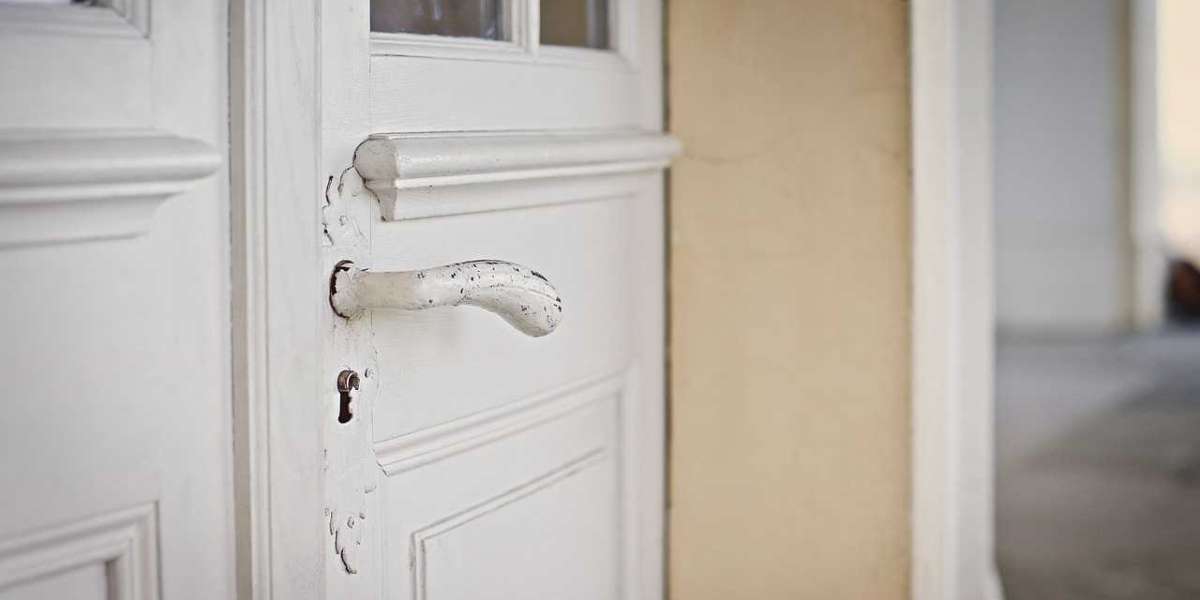Door knobs may seem like simple functional items, yet their history reveals a fascinating journey through design, culture, and craftsmanship. From the early days of civilization to the modern, stylish fixtures we see today, door knobs have evolved significantly, reflecting changes in society, technology, and aesthetics. This blog explores the rich history of door knobs, showcasing how these everyday objects transitioned from mere functionality to intricate works of art.
The Early Days: Basic Functionality
The earliest door hardware dates back to ancient civilizations. The Egyptians, for instance, used simple wooden pins to secure their doors. These rudimentary methods offered basic security but lacked the functionality and design we associate with door knobs today. As architecture evolved, so did door security.
In ancient Rome, the design of doors and their hardware began to develop. Romans used iron fittings and latches, with some doors featuring handles made from leather or metal. However, these early handles were often utilitarian and focused primarily on function rather than aesthetics. The concept of a knob as we know it today did not yet exist; doors were typically opened by pulling or pushing.
The Medieval Era: The Rise of Metalwork
The Middle Ages marked a significant turning point in the evolution of door hardware. During this time, craftsmanship flourished, and blacksmiths began to create more ornate designs. Iron became the primary material for door handles , and elaborate door fittings began to emerge.
The medieval door knocker, often shaped like a lion’s head or another decorative element, became a common feature, serving both functional and aesthetic purposes. While these knockers were used for announcing one’s arrival, they also represented the homeowner's wealth and social status.
During this period, simple metal handles evolved into more recognizable forms of knobs, though they were still far from the designs we see today. Functionality remained a priority, but the artistry of blacksmithing introduced an element of style.
The Renaissance: Artistic Flourish
The Renaissance period brought about a renewed appreciation for art and design. This cultural movement influenced all aspects of life, including architecture and hardware design. The introduction of new materials, such as brass, allowed for greater creativity in door knob design.
In this era, door knobs became more decorative and elaborate. Craftsmen began to experiment with shapes, sizes, and intricate patterns, reflecting the artistic sensibilities of the time. Ornate door knobs with intricate engravings, floral motifs, and geometric designs became fashionable, allowing homeowners to express their individuality and social standing.
As the Renaissance spread throughout Europe, so did the practice of creating beautifully designed door hardware. This era marked the beginning of door knobs not only being functional items but also important elements of architectural design.
The Industrial Revolution: Mass Production
The Industrial Revolution in the 18th and 19th centuries brought about significant changes in manufacturing processes. This era saw the introduction of new technologies that allowed for the mass production of door knobs and handles. As a result, previously intricate and handmade designs became accessible to the general public.
With the rise of factories, door knobs could now be produced in larger quantities, leading to a wider variety of designs and styles. Homeowners could choose from a range of materials, including glass, ceramic, and metal, and styles that ranged from Victorian ornate to more minimalist designs.
The Victorian era, in particular, was a time of great opulence, and door knobs became a reflection of this lavish lifestyle. Victorian homes often featured heavy brass knobs with intricate detailing, showcasing the homeowner's wealth. At the same time, simpler designs began to emerge, catering to those who preferred a more understated look.
The 20th Century: Modernism and Minimalism
As we moved into the 20th century, design philosophies began to shift. The Arts and Crafts movement emphasized simplicity and craftsmanship, while the Bauhaus movement promoted functional design with minimal ornamentation. These ideologies influenced door knob design, leading to the emergence of more streamlined and modern styles.
During the mid-20th century, door knobs transitioned from ornate designs to more minimalist forms. Materials like stainless steel and brushed nickel became popular, reflecting the era's focus on modernity and simplicity. Round and lever-shaped knobs emerged as common options, emphasizing functionality and ease of use.
The post-war era also brought about a surge in homeownership, leading to an increased demand for door hardware. Manufacturers began to focus on producing durable, affordable door knobs that appealed to the average consumer. This era also saw the introduction of innovative designs, such as the push-button door knob, making access even more convenient.
The Present Day: A Blend of Function and Style
Today, door knobs and handles are available in an incredible array of styles, materials, and finishes. From classic designs to contemporary aesthetics, homeowners have endless options to choose from. Brands offer everything from traditional brass knobs to sleek, modern designs in matte black or polished chrome.
Additionally, the rise of smart home technology has transformed door hardware yet again. Smart door knobs and handles offer keyless entry, remote access, and enhanced security features. These innovations reflect the modern homeowner's desire for convenience, safety, and style.
Moreover, the focus on sustainability has led to a resurgence in eco-friendly materials and production methods. Many manufacturers are now producing door knobs and handles from recycled materials or sustainable resources, appealing to environmentally conscious consumers.
Conclusion: More Than Just a Handle
The journey of door knobs from basic functional items to intricate, stylish accessories reflects broader cultural and technological shifts throughout history. What began as simple mechanisms for opening doors has transformed into essential elements of home design that convey personal style and enhance security.
As we continue to innovate and explore new materials and technologies, door knobs will undoubtedly remain an integral part of our homes—serving not only their primary function but also as a canvas for artistic expression. Whether you prefer classic elegance or modern minimalism, the right door knob can make a statement and add character to your space, proving that even the most mundane objects can carry a rich history and significant meaning.







